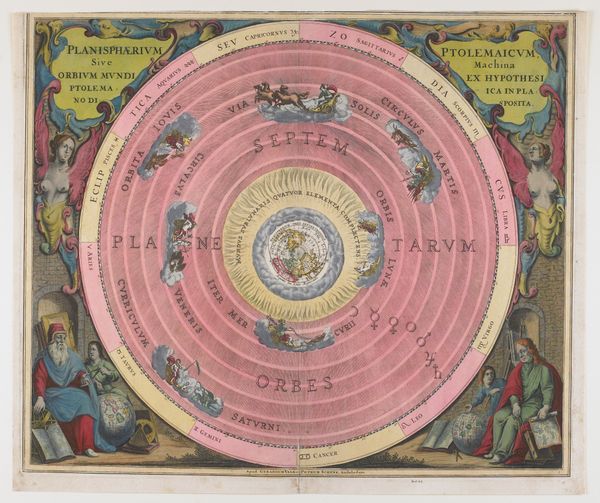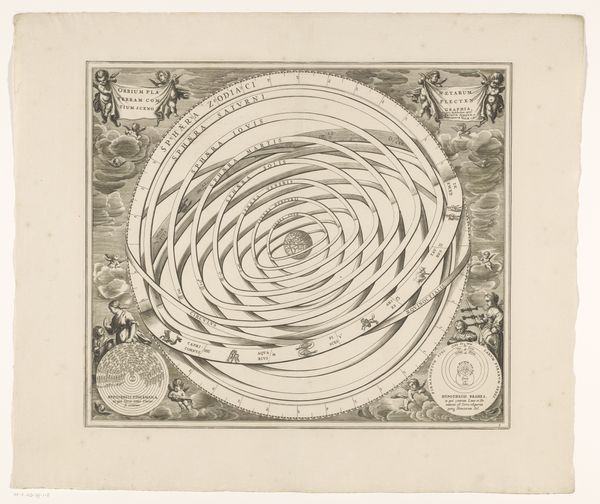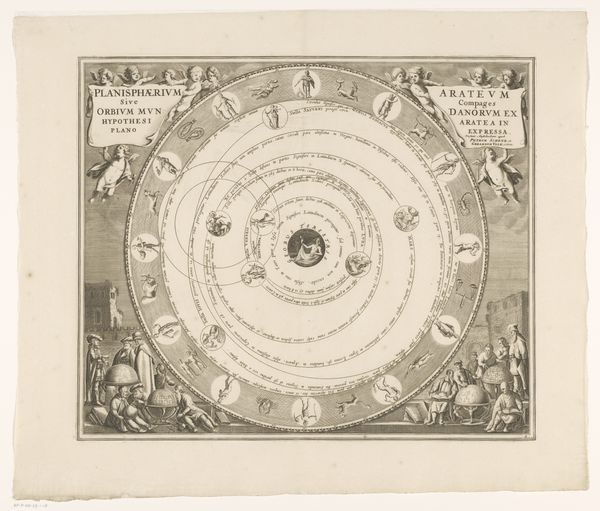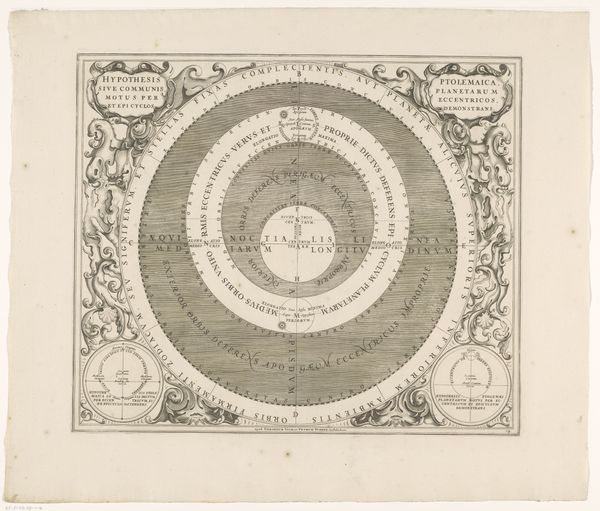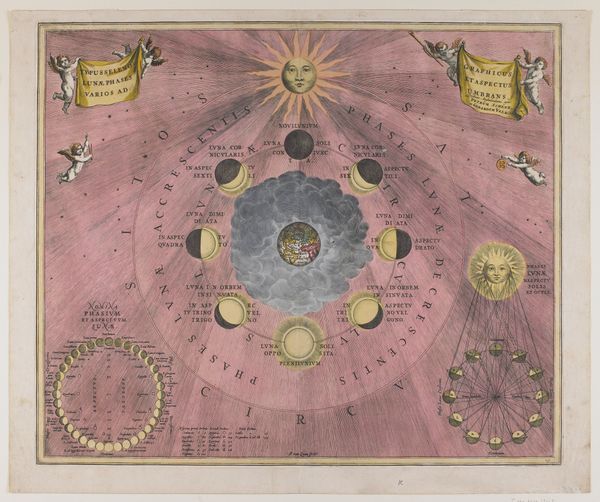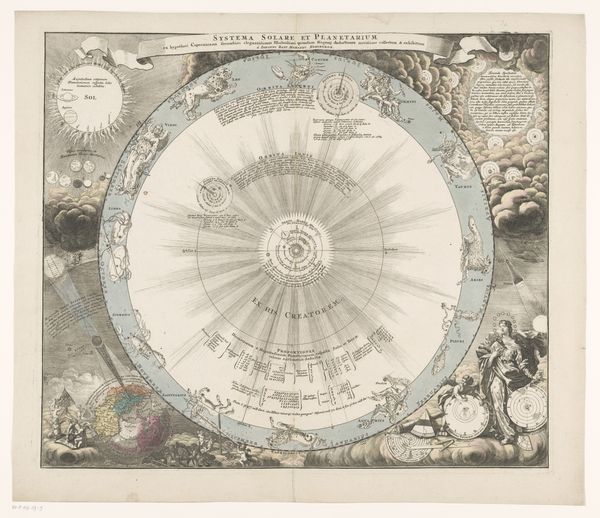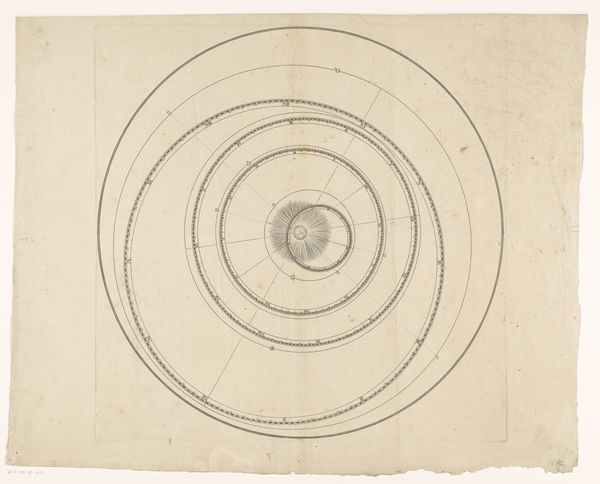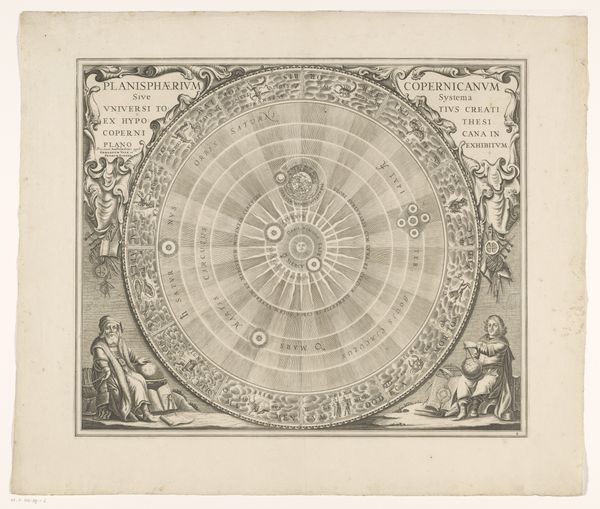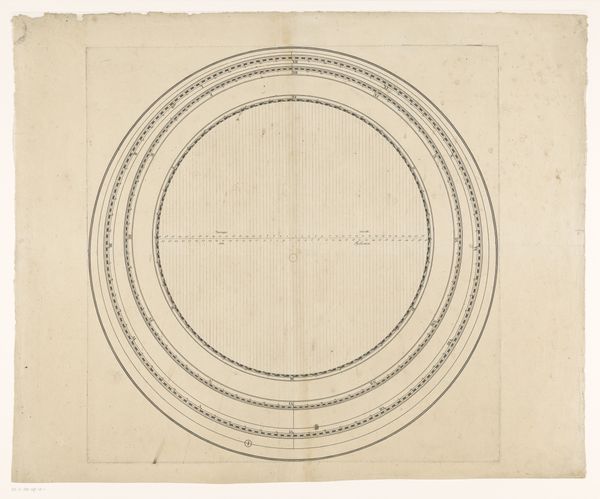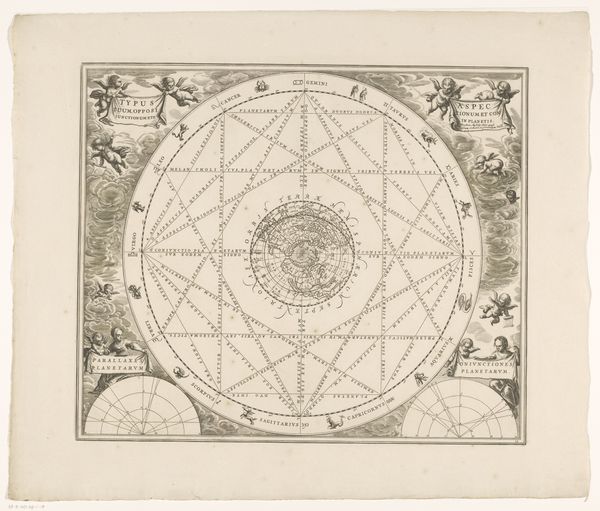
Scenograph of the Planetary Orbits Encompassing the Earth 1660
0:00
0:00
graphic-art, print, engraving
#
graphic-art
# print
#
geometric
#
ancient-mediterranean
#
history-painting
#
academic-art
#
decorative-art
#
engraving
#
decorative art
Dimensions: 16 3/4 x 19 1/2 in. (42.55 x 49.53 cm) (plate)
Copyright: Public Domain
This is Andreas Cellarius's "Scenograph of the Planetary Orbits Encompassing the Earth," created sometime before 1665. Note the series of concentric circles dominating the composition, each representing a planetary orbit around the Earth. The Earth, small and centrally located, underscores a geocentric view of the universe. The use of line here is precise, delineating not just the paths of celestial bodies but also the boundaries of human understanding at the time. The color palette— dominated by pale yellows, pinks and blues against a gray sky— creates an ethereal quality, suggesting a harmony between science and art. The image itself, as a map of the heavens, is a structural system of signs. Each planet, zodiac symbol, and classical figure is a coded element that reveals the cultural beliefs and knowledge frameworks of the 17th century. Cellarius is not merely depicting space but constructing a visual philosophy of the cosmos. Consider how this functions aesthetically: The careful arrangement and delicate coloring invite contemplation, even as they propose a model of the universe now superseded. The "Scenograph" serves as a reminder of the evolving nature of knowledge and the human quest to chart the unknown.
Comments
No comments
Be the first to comment and join the conversation on the ultimate creative platform.
